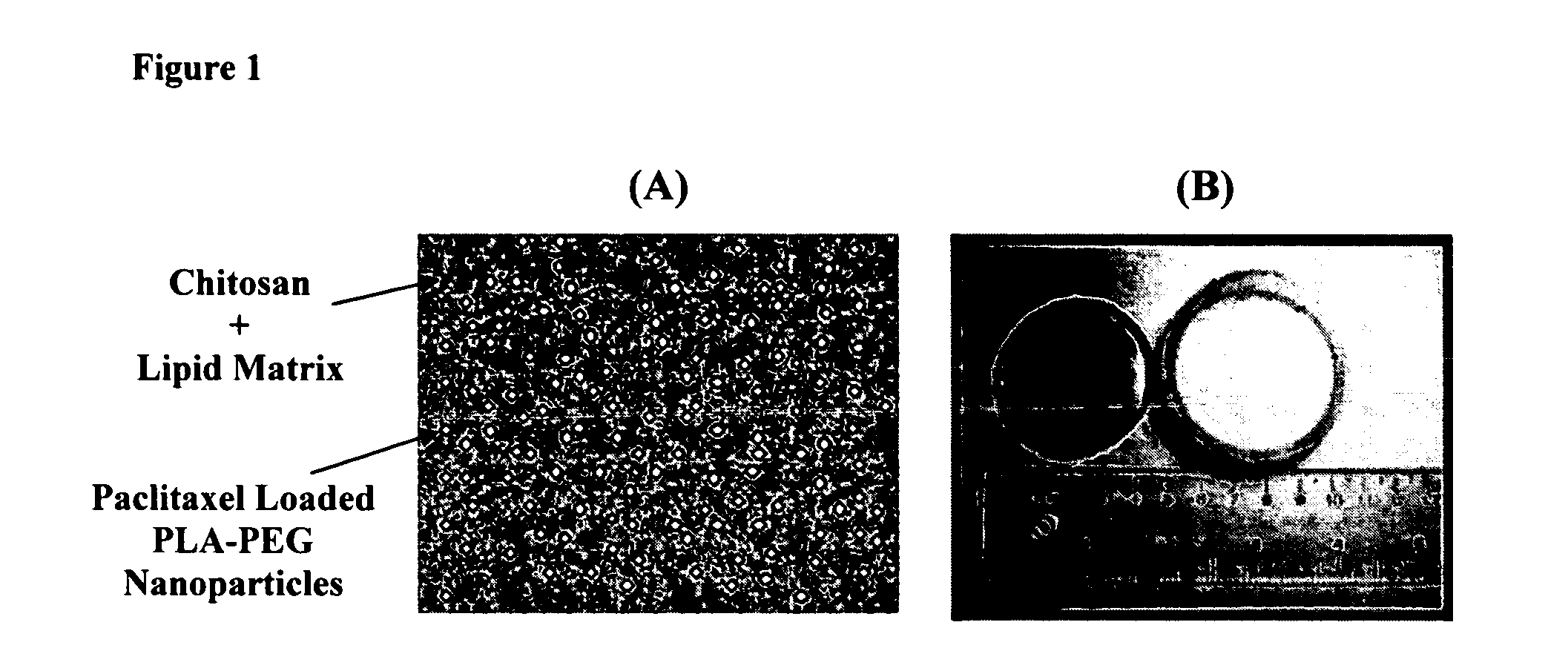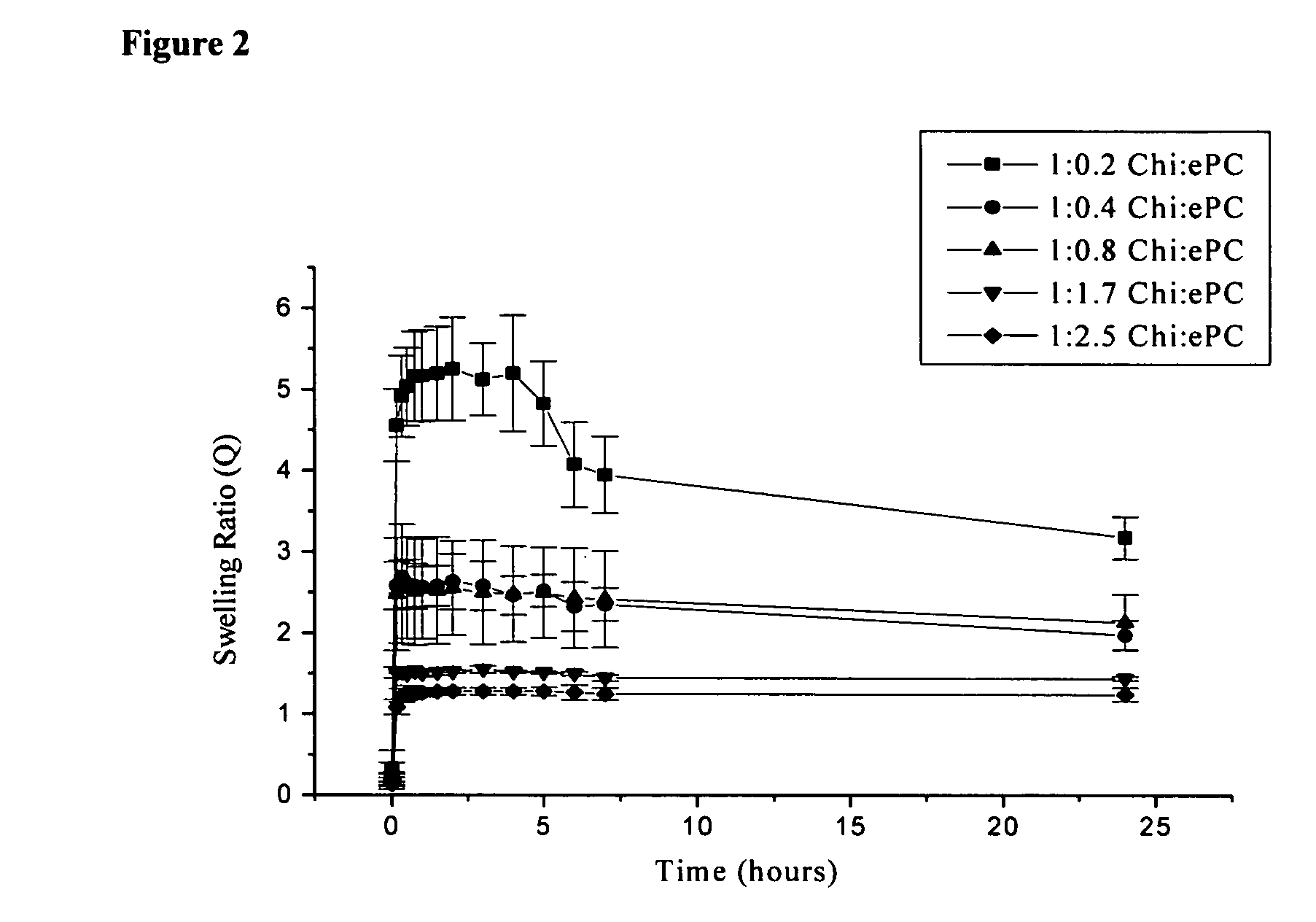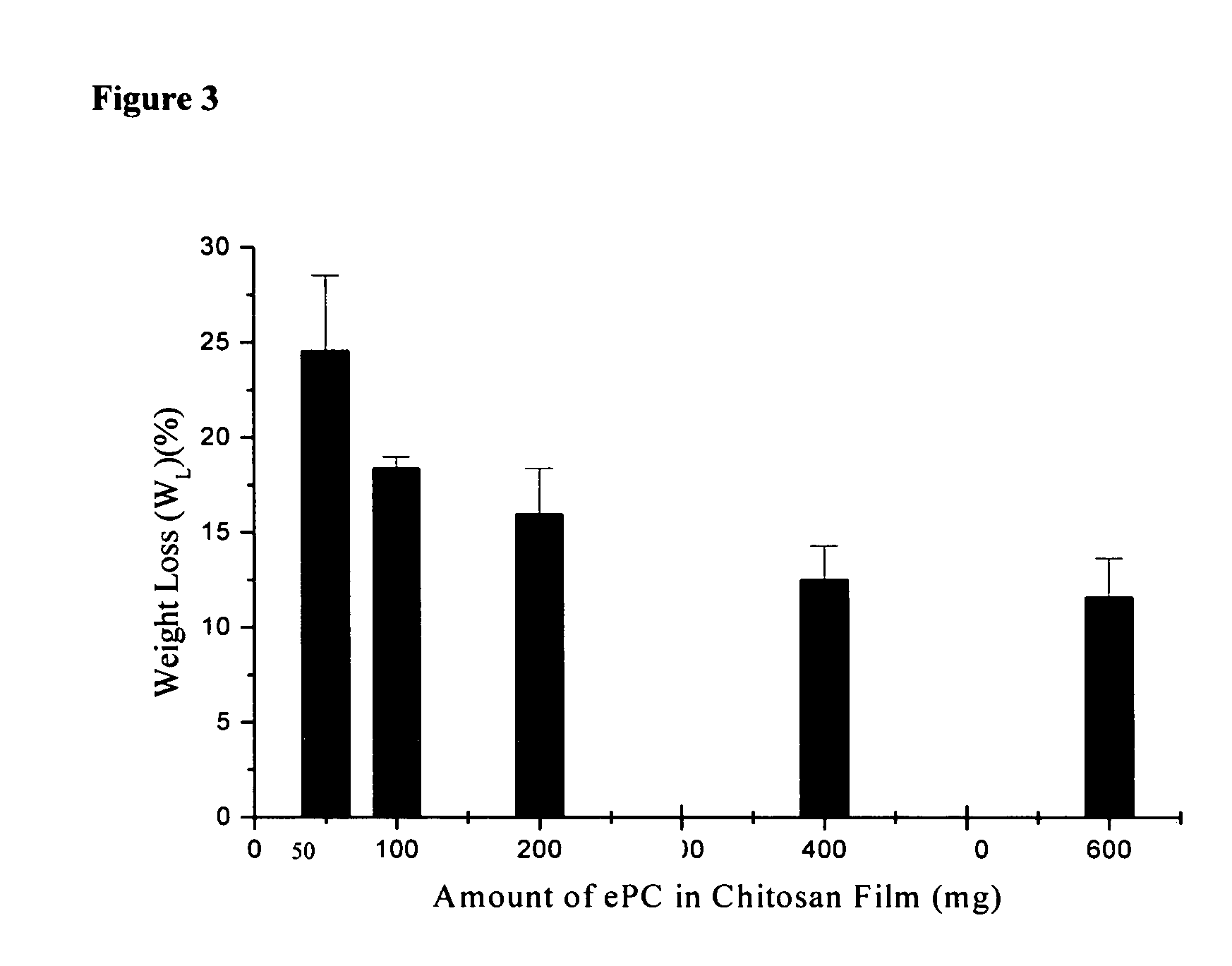Biodegradable biocompatible implant and method of manufacturing same
- Summary
- Abstract
- Description
- Claims
- Application Information
AI Technical Summary
Benefits of technology
Problems solved by technology
Method used
Image
Examples
example 1
Demonstration of Process to Prepare Implantable Polymer-Lipid Films
[0098] The initial step (Step (1)) is to dissolve chitosan (85% chitosan, 15% chitin) in 20 ml of distilled water containing 1% (v / v) acetic acid. In the next step (Step (2)) lipid (phosphatidylcholine, phosphatidylglycerol, phosphatidylethanolamine) is dissolved in warmed ethanol (at temperature above phase transition of lipid components). The chitosan and lipid solutions are then mixed (Step (3)) such that the lipid to CHi ratios range from 0.03:1 to 2.5:1 w / w. The mixture is then blended (Step (4)) by vortexing for 3 minutes and then homogenizing (Polytron® PT-MR 3100, Kinematica AG) at 2000 rpm for 15 minutes. The chitosan-lipid solution is then placed in a PFA teflon coated petri dish (Chemware Laboratory Products) and dried (Step (5)) in a dessicator containing silica for 5 days at room temperature.
example 2
Demonstration of Effect of Composition on Film Properties, Swelling and pH
[0099] A 10 mm×10 mm dry chitosan-lipid film was placed in 10 ml of buffer (0.01 M PBS) and incubated at 37° C. The film was removed from the vial after selected time periods, blotted dry and weighed prior to being placed into a new vial containing fresh buffer. The pH of each buffer was measured prior to adding the film and following the removal of each film. After 24 hours, the film was dried and the swelling ratio (Q) was calculated using the following equation: Q=(Wf−Wd) / Wd; where Wf is the weight of the film after each time point and Wd is the weight of the final dry film. The maximum swelling ratio (QM) is defined as the highest value of Q attained over the 24 hours of analysis. The percent weight loss (WL) of each film following the 24 hour incubation period in buffer was calculated using the equation: WL=[(Wi−Wd) / Wi]×100; where Wi is the initial weight of the film and Wd is as above.
[0100] The swelli...
example 3
Demonstration of Incorporation of Paclitaxel, a Hydrophobic Drug, into PoLi Implant
[0105] Nanoparticles were prepared via an emulsification-diffusion method. Briefly, 32 mg poly(d,l-lactide)-b-poly(ethylene oxide) (PLA-b-PEO) copolymer, 80 mg PLA homopolymer and 32 mg paclitaxel (PTX) were dissolved in 5 ml ethyl acetate. 5 μCi of 3H-PTX was added to the PTX solution. The ethyl acetate mixture was then added to 10 ml of distilled water. The solution was mixed (vortexed, homogenized or sonicated) for 5 minutes and diluted with 8 ml of water. The solution was then placed in dialysis membrane (spectrum laboratories Inc.) (MWCO:8000) and dialyzed against 2 litres of water to remove the organic solvent. Following dialysis, the nanoparticles were lyophilized (FreeZone® 6 Liter Freeze Dry System, Labconco Corp., Kansas City, Mo.) to obtain a dry powder.
[0106] The dry powder, consisting of PLA-PEG nanoparticles loaded with 3H-PTX, was resuspended in 3 ml of distilled water and added to 12...
PUM
| Property | Measurement | Unit |
|---|---|---|
| Fraction | aaaaa | aaaaa |
| Fraction | aaaaa | aaaaa |
| Ratio | aaaaa | aaaaa |
Abstract
Description
Claims
Application Information
 Login to View More
Login to View More - R&D
- Intellectual Property
- Life Sciences
- Materials
- Tech Scout
- Unparalleled Data Quality
- Higher Quality Content
- 60% Fewer Hallucinations
Browse by: Latest US Patents, China's latest patents, Technical Efficacy Thesaurus, Application Domain, Technology Topic, Popular Technical Reports.
© 2025 PatSnap. All rights reserved.Legal|Privacy policy|Modern Slavery Act Transparency Statement|Sitemap|About US| Contact US: help@patsnap.com



